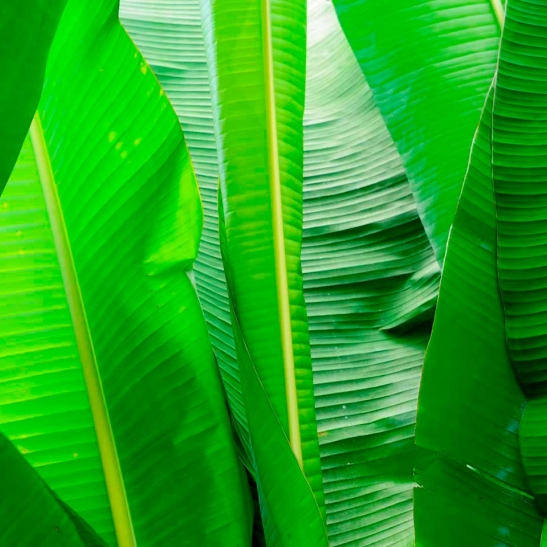
Banana leaf
Banana leaf
The large green leaves are NOT edible, but they look attractive.
The slightly ribbed, round, or square leaves work well as a natural packaging for a rice dish. They can also be used as a decorative way to serve sushi or sashimi
AVAILABILITY: Year-round.
STORAGE: Recommended between 2 and 4° C.
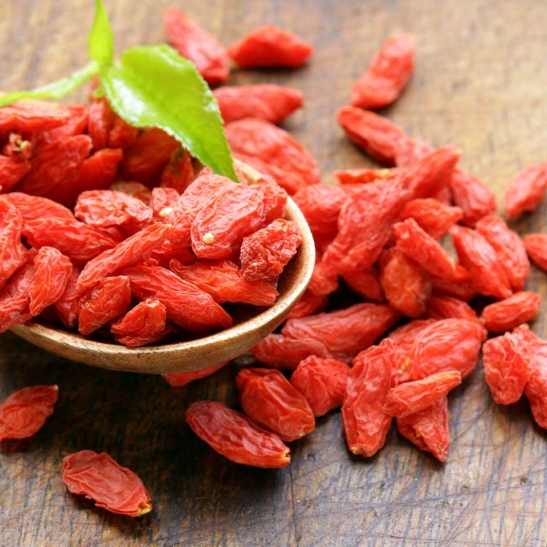
Goji berries
Goji berries
Traditional Chinese medicine gives Goji Berries, also known as fruits of youth, numerous curative and preventive properties.
The fruit is red-orange, slightly elongated. It has a diameter of 1-2 cm and several flattened seeds inside.
This fruit is rich in antioxidants and there is a belief that its consumption preserves health by ensuring a long life.
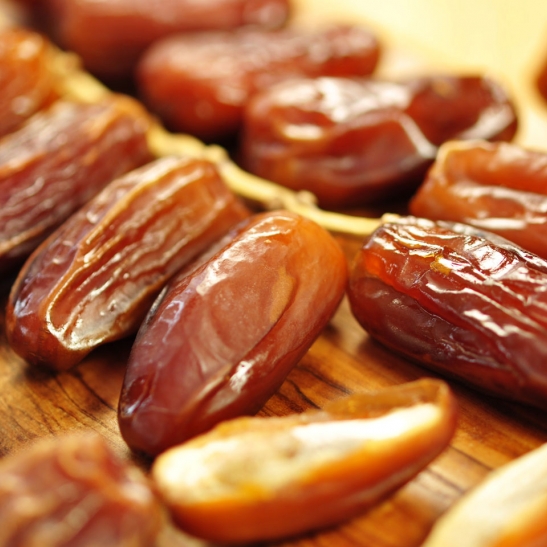
Date
Date
Dates have been considered a fruit of paradise for centuries, miraculous for their numerous nutritional virtues.
Surely given their high caloric intake, you have to be careful not to eat too many, but their sweetness is a whim that is impossible to give up!
AVAILABILITY: Year-round.
STORAGE: Recommended around 2° C.
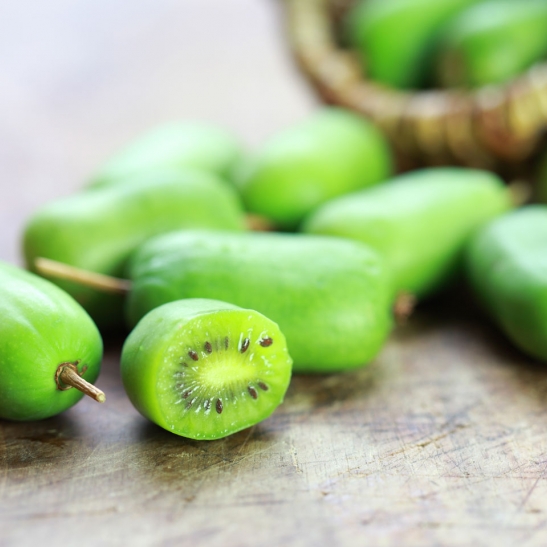
Kiwi Berry
Kiwi Berry
Kiwi berries are grape-sized and resemble a cut kiwi. Unlike kiwis, the skin of kiwi berries is not fuzzy. Kiwi berries are green to brown in colour, with a bright green inside.
Enthusiasts will find the flavour wonderfully sweet and aromatic.
AVAILABILITY: February, March, August and September.
STORAGE: Recommended between 2 and 8° C.
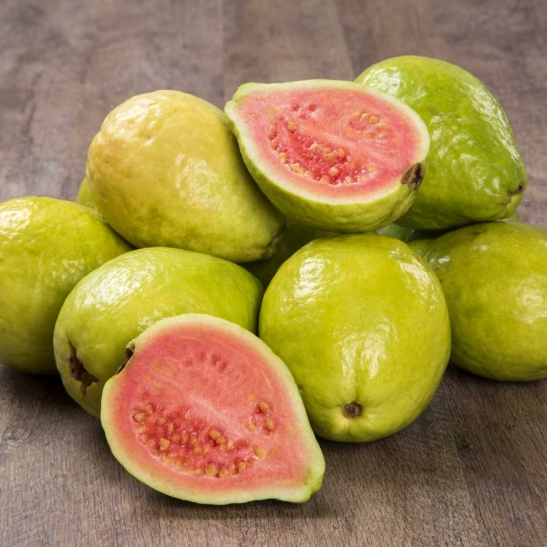
Guava
Guava
Excellent to eat with a spoon or to squeeze to enjoy a sweet and refreshing juice.
The peel can also be eaten without problems.
AVAILABILITY: Year-round
STORAGE: Recommended around 10° C.
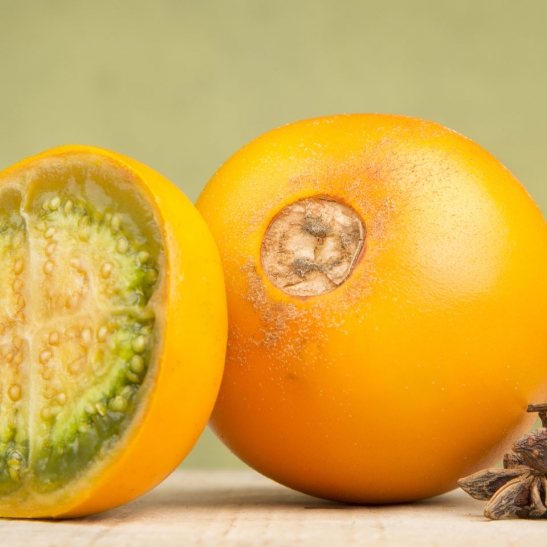
Naranjilla
Naranjilla
This curious fruit, typical of South America, is called Lulo or Naranjilla.
It has a green pulp rich in juice but with a characteristic sour taste.
The fruit is mainly used to produce sweetened fruit juices.
Excellent as an ingredient for a fruit salad, a smoothie or simply to be eaten raw, after peeling it.
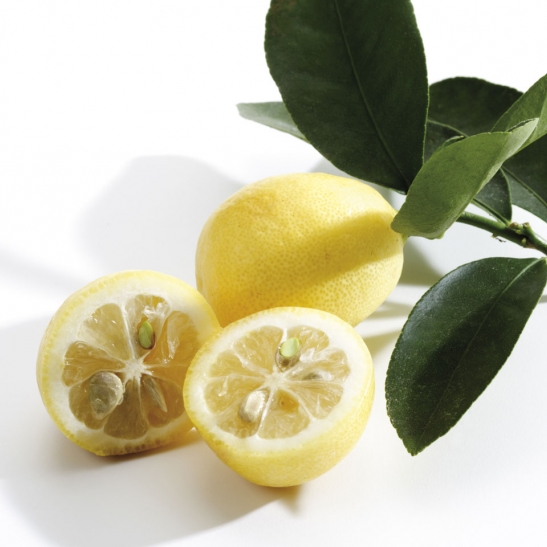
Limequats
Limequats
They are among the smallest citrus varieties. Each fruit measures only 3-4 cm.
The pulp inside is yellow. The limequat seeds are edible, so the fruit can be eaten whole
AVAILABILITY: From August to December
STORAGE: Recommended around 10° C.
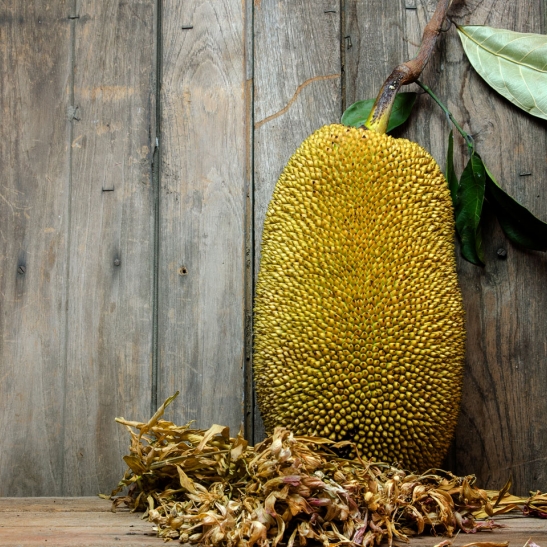
Jackfruit
Jackfruit
Thanks to the very high amount of nutrients it contains, it is part of the superfood category.
A chest with a fleshy pulp rich in vitamin C: its heart is made up of numerous orange or yellow fruits, whose seeds are a source of protein and potassium, calcium, and iron.
It is a fruit of truly enormous dimensions: in the largest specimens, it can contain up to 500 bulbs of pulp, in short, so much food to feed an entire family.
AVAILABILITY: Year-round
STORAGE: Recommended around 10° C.
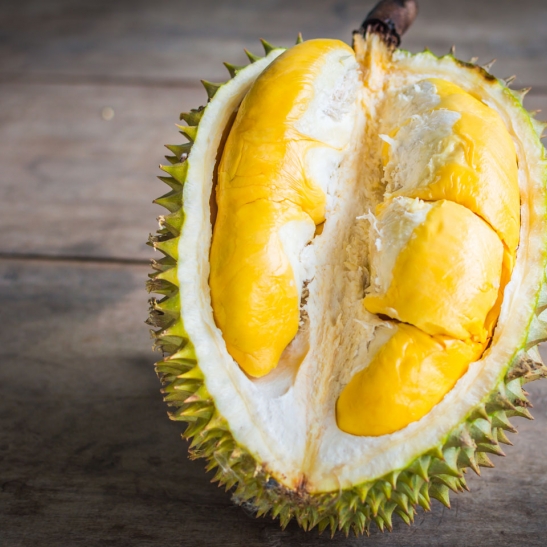
Durian
Durian
Durian is a large oval fruit with incredibly thorny skin.
Outside its place of origin, it is known above all for its particular strong and penetrating smell.
But don't be discouraged: inside it contains a soft, sweet, and creamy pulp, a real delicacy!
AVAILABILITY: Year-round
STORAGE: Recommended around 10° C.
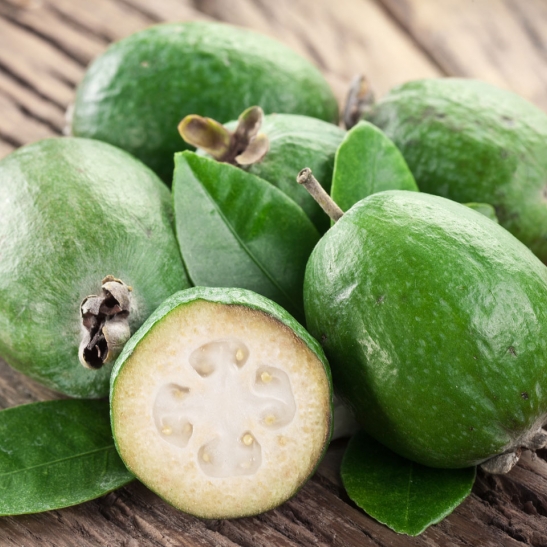
Feijoa
Feijoa
Feijoa is a tasty small tropical fruit. It has green skin and white pulp with an intense aroma, its flavour is sweet and sour and it is often described as a mix between pineapple and strawberry flavours.
It is great to eat it fresh with a teaspoon, while it is incredibly refreshing left to infuse with water and lemon.
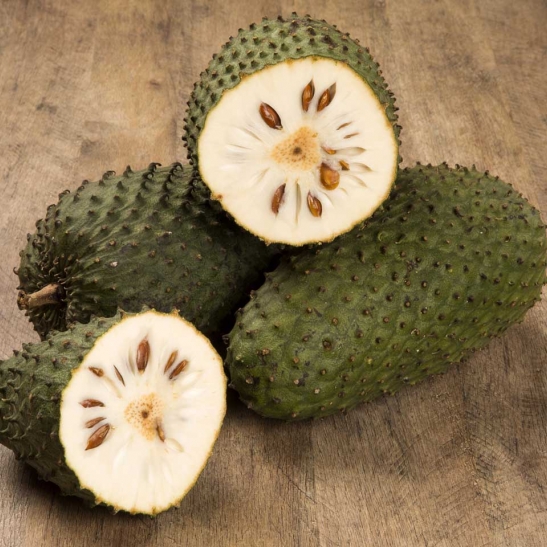
Guanabana
Guanabana
The Guanabana outer skin is green but it has a sweet and creamy white pulp, perfect for making desserts and smoothies.
It is a large fruit that can reach 30 cm. You will not be able to miss it!
AVAILABILITY: Year-round
STORAGE: Recommended around 10° C.
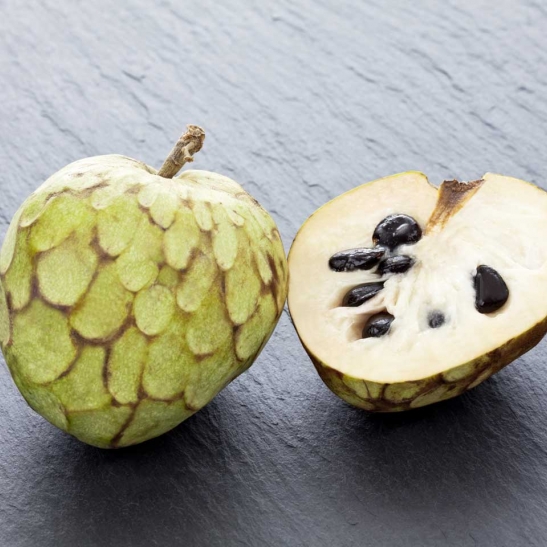
Cherimoya
Cherimoya
Exotic and fragrant, it contains a tasty pulp with a sweet flavour.
It can be enjoyed alone or in addition to other fruits in a fruit salad. It is also well suited for the preparation of smoothies and slushes.
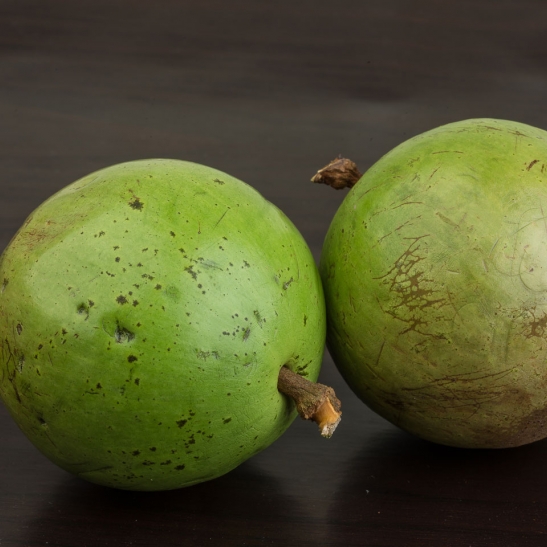
Mamey sapote
Mamey sapote
This fruit is rare since it is not easy to find.
The plant produces medium-sized fruits similar to green apples that turn yellow when fully ripe.
The peel is not edible, and the sweet pulp can recall the red banana with hints of vanilla. Its texture, when fully ripe, is reminiscent of that of avocado, and its colour is white or creamy yellow. The seeds have narcotic properties.
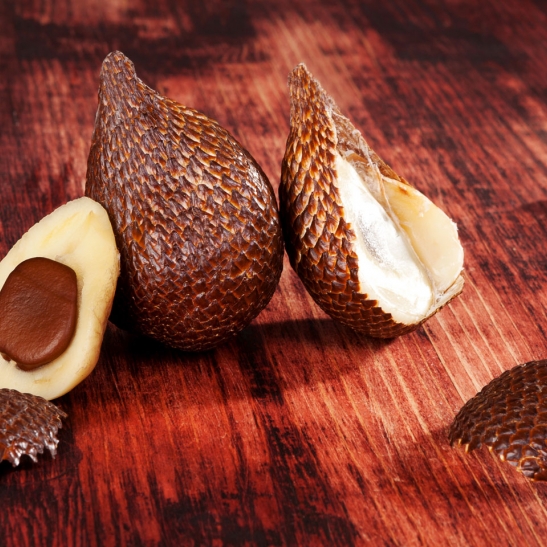
Salak
Salak
Also known as Snake Fruit, it is characterized by a teardrop shape and a thick outer skin of shades between brown and reddish, reminiscent of snake scales.
For those who taste it for the first time, the taste of this curious tropical fruit may recall a mix of pineapple, honey, citrus with a flavour that is halfway between sweet and sour.
AVAILABILITY: Year-round
STORAGE: Recommended between 10 and 12° C.
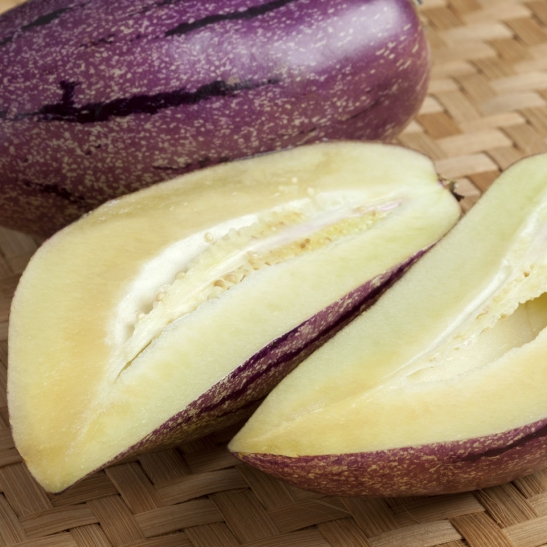
Pepino
Pepino
Originally from the Andes, it is a fruit with a delicate flavour.
The shape is oval and, in terms of appearance, it resembles a melon but is made unmistakable by the smooth skin with purple streaks on a yellow-orange base.
Once opened, it has a compact pulp with a lively light-yellow colour.
The seeds are completely edible: try them roasted in a pan!
AVAILABILITY: Year-round
STORAGE: Recommended between 10 and 12° C.
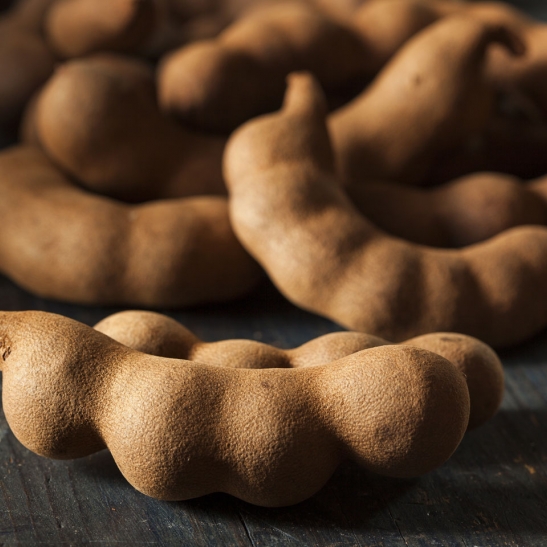
Tamarind
Tamarind
The fruit of this tree is a legume: a pod about 10 cm long, light brown or green.
Rich in mineral salts, vitamins, and fibers, tamarind helps to regulate blood pressure and to keep cholesterol under control. With its pulp creams, you can make sauces and syrups!
AVAILABILITY: Year-round
STORAGE: Recommended between 10 and 12° C.
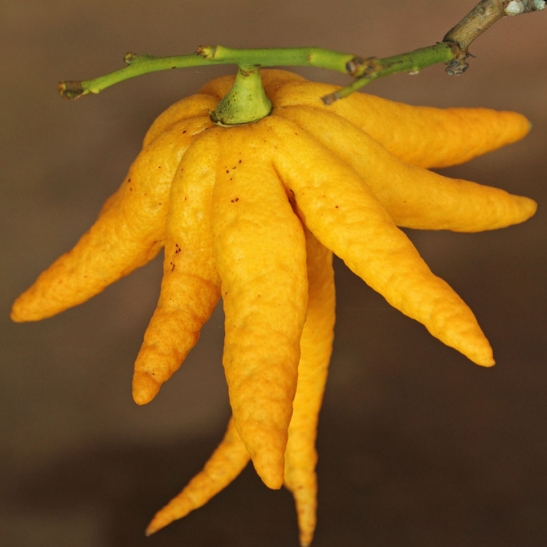
Citrus Medica
Citrus Medica
It is a curious citrus, a variety of cedar with particular segments.
Its peel is often left to ferment or candied. It is also used for the preparation of liqueurs!
AVAILABILITY: Year-round
STORAGE: Recommended around 10° C.
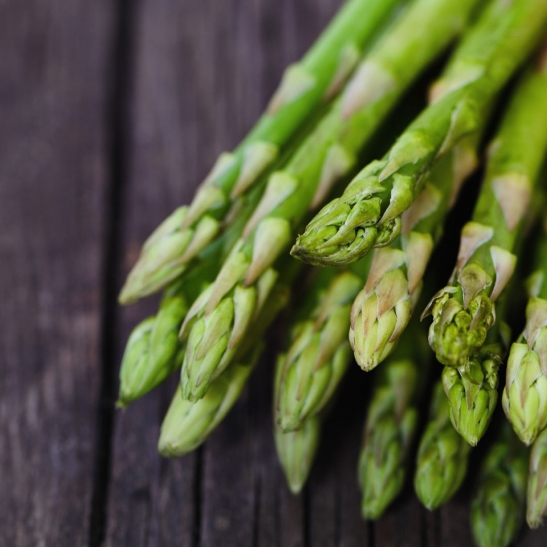
Green asparagus
Green asparagus
The Peruvian green asparagus is characterized by its tender texture, which allows it to be eaten without being peeled, making preparation faster.
The taste is typically intense, which differs from the delicate one of white.
You can prepare the green asparagus in combination with strong flavours that will enhance it.
AVAILABILITY: Year-round
STORAGE: Recommended around 2° C.
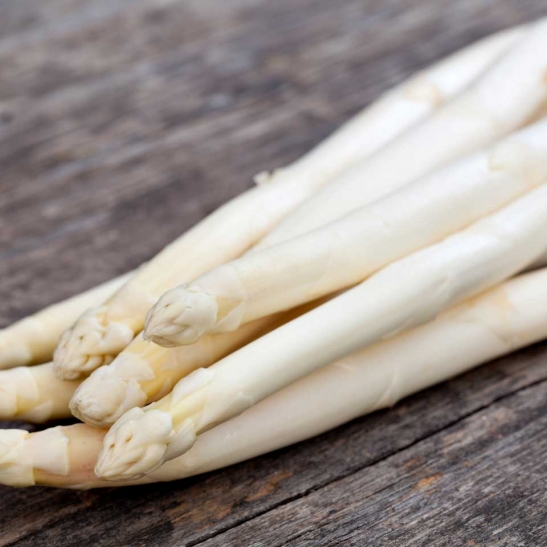
White asparagus
White asparagus
It is a very used product for dishes. You can accompany it with eggs, use it in risottos or tasty savoury pies.
This product of ours is available throughout the year, as we buy it from Peru!
AVAILABILITY: Year-round
STORAGE: Recommended around 2° C.
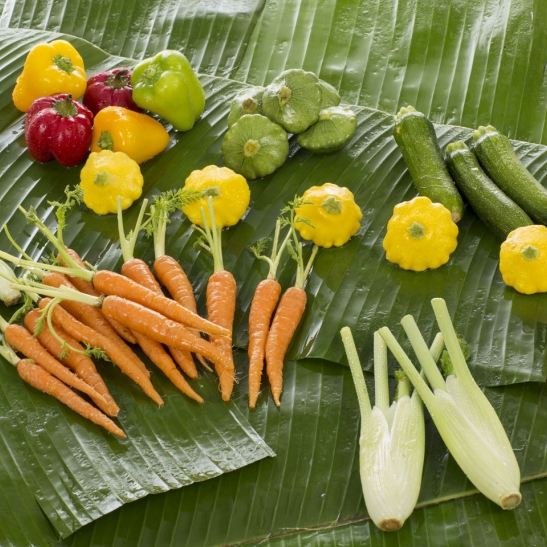
Mini Vegetables
Mini Vegetables
Mini Vegetables are so tiny but so rich in taste.
Be surprised and surprise others too by serving them!
AVAILABILITY: Year-round
STORAGE: Recommended between 4 and 8° C.
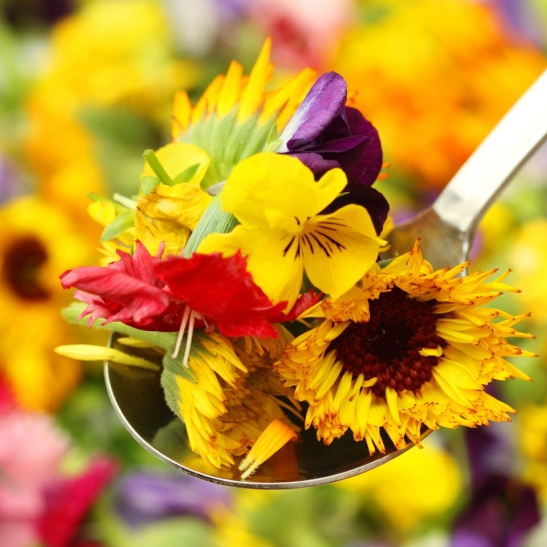
Edible flowers
Edible flowers
In addition to the traditional courgette flowers, which are among the most consumed, there ame many others that can be eaten.
They are called edible flowers and are widely used in restaurant kitchens for floral arrangements that go beyond aesthetics!
AVAILABILITY: Year-round
STORAGE: Recommended between 2 and 4° C.

Banana leaf
Banana leaf
The large green leaves are NOT edible, but they look attractive.
The slightly ribbed, round, or square leaves work well as a natural packaging for a rice dish. They can also be used as a decorative way to serve sushi or sashimi
AVAILABILITY: Year-round.
STORAGE: Recommended between 2 and 4° C.

Goji berries
Goji berries
Traditional Chinese medicine gives Goji Berries, also known as fruits of youth, numerous curative and preventive properties.
The fruit is red-orange, slightly elongated. It has a diameter of 1-2 cm and several flattened seeds inside.
This fruit is rich in antioxidants and there is a belief that its consumption preserves health by ensuring a long life.

Date
Date
Dates have been considered a fruit of paradise for centuries, miraculous for their numerous nutritional virtues.
Surely given their high caloric intake, you have to be careful not to eat too many, but their sweetness is a whim that is impossible to give up!
AVAILABILITY: Year-round.
STORAGE: Recommended around 2° C.

Kiwi Berry
Kiwi Berry
Kiwi berries are grape-sized and resemble a cut kiwi. Unlike kiwis, the skin of kiwi berries is not fuzzy. Kiwi berries are green to brown in colour, with a bright green inside.
Enthusiasts will find the flavour wonderfully sweet and aromatic.
AVAILABILITY: February, March, August and September.
STORAGE: Recommended between 2 and 8° C.

Guava
Guava
Excellent to eat with a spoon or to squeeze to enjoy a sweet and refreshing juice.
The peel can also be eaten without problems.
AVAILABILITY: Year-round
STORAGE: Recommended around 10° C.

Naranjilla
Naranjilla
This curious fruit, typical of South America, is called Lulo or Naranjilla.
It has a green pulp rich in juice but with a characteristic sour taste.
The fruit is mainly used to produce sweetened fruit juices.
Excellent as an ingredient for a fruit salad, a smoothie or simply to be eaten raw, after peeling it.

Limequats
Limequats
They are among the smallest citrus varieties. Each fruit measures only 3-4 cm.
The pulp inside is yellow. The limequat seeds are edible, so the fruit can be eaten whole
AVAILABILITY: From August to December
STORAGE: Recommended around 10° C.

Jackfruit
Jackfruit
Thanks to the very high amount of nutrients it contains, it is part of the superfood category.
A chest with a fleshy pulp rich in vitamin C: its heart is made up of numerous orange or yellow fruits, whose seeds are a source of protein and potassium, calcium, and iron.
It is a fruit of truly enormous dimensions: in the largest specimens, it can contain up to 500 bulbs of pulp, in short, so much food to feed an entire family.
AVAILABILITY: Year-round
STORAGE: Recommended around 10° C.

Durian
Durian
Durian is a large oval fruit with incredibly thorny skin.
Outside its place of origin, it is known above all for its particular strong and penetrating smell.
But don't be discouraged: inside it contains a soft, sweet, and creamy pulp, a real delicacy!
AVAILABILITY: Year-round
STORAGE: Recommended around 10° C.

Feijoa
Feijoa
Feijoa is a tasty small tropical fruit. It has green skin and white pulp with an intense aroma, its flavour is sweet and sour and it is often described as a mix between pineapple and strawberry flavours.
It is great to eat it fresh with a teaspoon, while it is incredibly refreshing left to infuse with water and lemon.

Guanabana
Guanabana
The Guanabana outer skin is green but it has a sweet and creamy white pulp, perfect for making desserts and smoothies.
It is a large fruit that can reach 30 cm. You will not be able to miss it!
AVAILABILITY: Year-round
STORAGE: Recommended around 10° C.

Cherimoya
Cherimoya
Exotic and fragrant, it contains a tasty pulp with a sweet flavour.
It can be enjoyed alone or in addition to other fruits in a fruit salad. It is also well suited for the preparation of smoothies and slushes.

Mamey sapote
Mamey sapote
This fruit is rare since it is not easy to find.
The plant produces medium-sized fruits similar to green apples that turn yellow when fully ripe.
The peel is not edible, and the sweet pulp can recall the red banana with hints of vanilla. Its texture, when fully ripe, is reminiscent of that of avocado, and its colour is white or creamy yellow. The seeds have narcotic properties.

Salak
Salak
Also known as Snake Fruit, it is characterized by a teardrop shape and a thick outer skin of shades between brown and reddish, reminiscent of snake scales.
For those who taste it for the first time, the taste of this curious tropical fruit may recall a mix of pineapple, honey, citrus with a flavour that is halfway between sweet and sour.
AVAILABILITY: Year-round
STORAGE: Recommended between 10 and 12° C.

Pepino
Pepino
Originally from the Andes, it is a fruit with a delicate flavour.
The shape is oval and, in terms of appearance, it resembles a melon but is made unmistakable by the smooth skin with purple streaks on a yellow-orange base.
Once opened, it has a compact pulp with a lively light-yellow colour.
The seeds are completely edible: try them roasted in a pan!
AVAILABILITY: Year-round
STORAGE: Recommended between 10 and 12° C.

Tamarind
Tamarind
The fruit of this tree is a legume: a pod about 10 cm long, light brown or green.
Rich in mineral salts, vitamins, and fibers, tamarind helps to regulate blood pressure and to keep cholesterol under control. With its pulp creams, you can make sauces and syrups!
AVAILABILITY: Year-round
STORAGE: Recommended between 10 and 12° C.

Citrus Medica
Citrus Medica
It is a curious citrus, a variety of cedar with particular segments.
Its peel is often left to ferment or candied. It is also used for the preparation of liqueurs!
AVAILABILITY: Year-round
STORAGE: Recommended around 10° C.

Green asparagus
Green asparagus
The Peruvian green asparagus is characterized by its tender texture, which allows it to be eaten without being peeled, making preparation faster.
The taste is typically intense, which differs from the delicate one of white.
You can prepare the green asparagus in combination with strong flavours that will enhance it.
AVAILABILITY: Year-round
STORAGE: Recommended around 2° C.

White asparagus
White asparagus
It is a very used product for dishes. You can accompany it with eggs, use it in risottos or tasty savoury pies.
This product of ours is available throughout the year, as we buy it from Peru!
AVAILABILITY: Year-round
STORAGE: Recommended around 2° C.

Mini Vegetables
Mini Vegetables
Mini Vegetables are so tiny but so rich in taste.
Be surprised and surprise others too by serving them!
AVAILABILITY: Year-round
STORAGE: Recommended between 4 and 8° C.

Edible flowers
Edible flowers
In addition to the traditional courgette flowers, which are among the most consumed, there ame many others that can be eaten.
They are called edible flowers and are widely used in restaurant kitchens for floral arrangements that go beyond aesthetics!
AVAILABILITY: Year-round
STORAGE: Recommended between 2 and 4° C.

Banana leaf
Banana leaf
The large green leaves are NOT edible, but they look attractive.
The slightly ribbed, round, or square leaves work well as a natural packaging for a rice dish. They can also be used as a decorative way to serve sushi or sashimi
AVAILABILITY: Year-round.
STORAGE: Recommended between 2 and 4° C.

Goji berries
Goji berries
Traditional Chinese medicine gives Goji Berries, also known as fruits of youth, numerous curative and preventive properties.
The fruit is red-orange, slightly elongated. It has a diameter of 1-2 cm and several flattened seeds inside.
This fruit is rich in antioxidants and there is a belief that its consumption preserves health by ensuring a long life.

Date
Date
Dates have been considered a fruit of paradise for centuries, miraculous for their numerous nutritional virtues.
Surely given their high caloric intake, you have to be careful not to eat too many, but their sweetness is a whim that is impossible to give up!
AVAILABILITY: Year-round.
STORAGE: Recommended around 2° C.

Kiwi Berry
Kiwi Berry
Kiwi berries are grape-sized and resemble a cut kiwi. Unlike kiwis, the skin of kiwi berries is not fuzzy. Kiwi berries are green to brown in colour, with a bright green inside.
Enthusiasts will find the flavour wonderfully sweet and aromatic.
AVAILABILITY: February, March, August and September.
STORAGE: Recommended between 2 and 8° C.

Guava
Guava
Excellent to eat with a spoon or to squeeze to enjoy a sweet and refreshing juice.
The peel can also be eaten without problems.
AVAILABILITY: Year-round
STORAGE: Recommended around 10° C.

Naranjilla
Naranjilla
This curious fruit, typical of South America, is called Lulo or Naranjilla.
It has a green pulp rich in juice but with a characteristic sour taste.
The fruit is mainly used to produce sweetened fruit juices.
Excellent as an ingredient for a fruit salad, a smoothie or simply to be eaten raw, after peeling it.

Limequats
Limequats
They are among the smallest citrus varieties. Each fruit measures only 3-4 cm.
The pulp inside is yellow. The limequat seeds are edible, so the fruit can be eaten whole
AVAILABILITY: From August to December
STORAGE: Recommended around 10° C.

Jackfruit
Jackfruit
Thanks to the very high amount of nutrients it contains, it is part of the superfood category.
A chest with a fleshy pulp rich in vitamin C: its heart is made up of numerous orange or yellow fruits, whose seeds are a source of protein and potassium, calcium, and iron.
It is a fruit of truly enormous dimensions: in the largest specimens, it can contain up to 500 bulbs of pulp, in short, so much food to feed an entire family.
AVAILABILITY: Year-round
STORAGE: Recommended around 10° C.

Durian
Durian
Durian is a large oval fruit with incredibly thorny skin.
Outside its place of origin, it is known above all for its particular strong and penetrating smell.
But don't be discouraged: inside it contains a soft, sweet, and creamy pulp, a real delicacy!
AVAILABILITY: Year-round
STORAGE: Recommended around 10° C.

Feijoa
Feijoa
Feijoa is a tasty small tropical fruit. It has green skin and white pulp with an intense aroma, its flavour is sweet and sour and it is often described as a mix between pineapple and strawberry flavours.
It is great to eat it fresh with a teaspoon, while it is incredibly refreshing left to infuse with water and lemon.

Guanabana
Guanabana
The Guanabana outer skin is green but it has a sweet and creamy white pulp, perfect for making desserts and smoothies.
It is a large fruit that can reach 30 cm. You will not be able to miss it!
AVAILABILITY: Year-round
STORAGE: Recommended around 10° C.

Cherimoya
Cherimoya
Exotic and fragrant, it contains a tasty pulp with a sweet flavour.
It can be enjoyed alone or in addition to other fruits in a fruit salad. It is also well suited for the preparation of smoothies and slushes.

Mamey sapote
Mamey sapote
This fruit is rare since it is not easy to find.
The plant produces medium-sized fruits similar to green apples that turn yellow when fully ripe.
The peel is not edible, and the sweet pulp can recall the red banana with hints of vanilla. Its texture, when fully ripe, is reminiscent of that of avocado, and its colour is white or creamy yellow. The seeds have narcotic properties.

Salak
Salak
Also known as Snake Fruit, it is characterized by a teardrop shape and a thick outer skin of shades between brown and reddish, reminiscent of snake scales.
For those who taste it for the first time, the taste of this curious tropical fruit may recall a mix of pineapple, honey, citrus with a flavour that is halfway between sweet and sour.
AVAILABILITY: Year-round
STORAGE: Recommended between 10 and 12° C.

Pepino
Pepino
Originally from the Andes, it is a fruit with a delicate flavour.
The shape is oval and, in terms of appearance, it resembles a melon but is made unmistakable by the smooth skin with purple streaks on a yellow-orange base.
Once opened, it has a compact pulp with a lively light-yellow colour.
The seeds are completely edible: try them roasted in a pan!
AVAILABILITY: Year-round
STORAGE: Recommended between 10 and 12° C.

Tamarind
Tamarind
The fruit of this tree is a legume: a pod about 10 cm long, light brown or green.
Rich in mineral salts, vitamins, and fibers, tamarind helps to regulate blood pressure and to keep cholesterol under control. With its pulp creams, you can make sauces and syrups!
AVAILABILITY: Year-round
STORAGE: Recommended between 10 and 12° C.

Citrus Medica
Citrus Medica
It is a curious citrus, a variety of cedar with particular segments.
Its peel is often left to ferment or candied. It is also used for the preparation of liqueurs!
AVAILABILITY: Year-round
STORAGE: Recommended around 10° C.

Green asparagus
Green asparagus
The Peruvian green asparagus is characterized by its tender texture, which allows it to be eaten without being peeled, making preparation faster.
The taste is typically intense, which differs from the delicate one of white.
You can prepare the green asparagus in combination with strong flavours that will enhance it.
AVAILABILITY: Year-round
STORAGE: Recommended around 2° C.

White asparagus
White asparagus
It is a very used product for dishes. You can accompany it with eggs, use it in risottos or tasty savoury pies.
This product of ours is available throughout the year, as we buy it from Peru!
AVAILABILITY: Year-round
STORAGE: Recommended around 2° C.

Mini Vegetables
Mini Vegetables
Mini Vegetables are so tiny but so rich in taste.
Be surprised and surprise others too by serving them!
AVAILABILITY: Year-round
STORAGE: Recommended between 4 and 8° C.

Edible flowers
Edible flowers
In addition to the traditional courgette flowers, which are among the most consumed, there ame many others that can be eaten.
They are called edible flowers and are widely used in restaurant kitchens for floral arrangements that go beyond aesthetics!
AVAILABILITY: Year-round
STORAGE: Recommended between 2 and 4° C.


